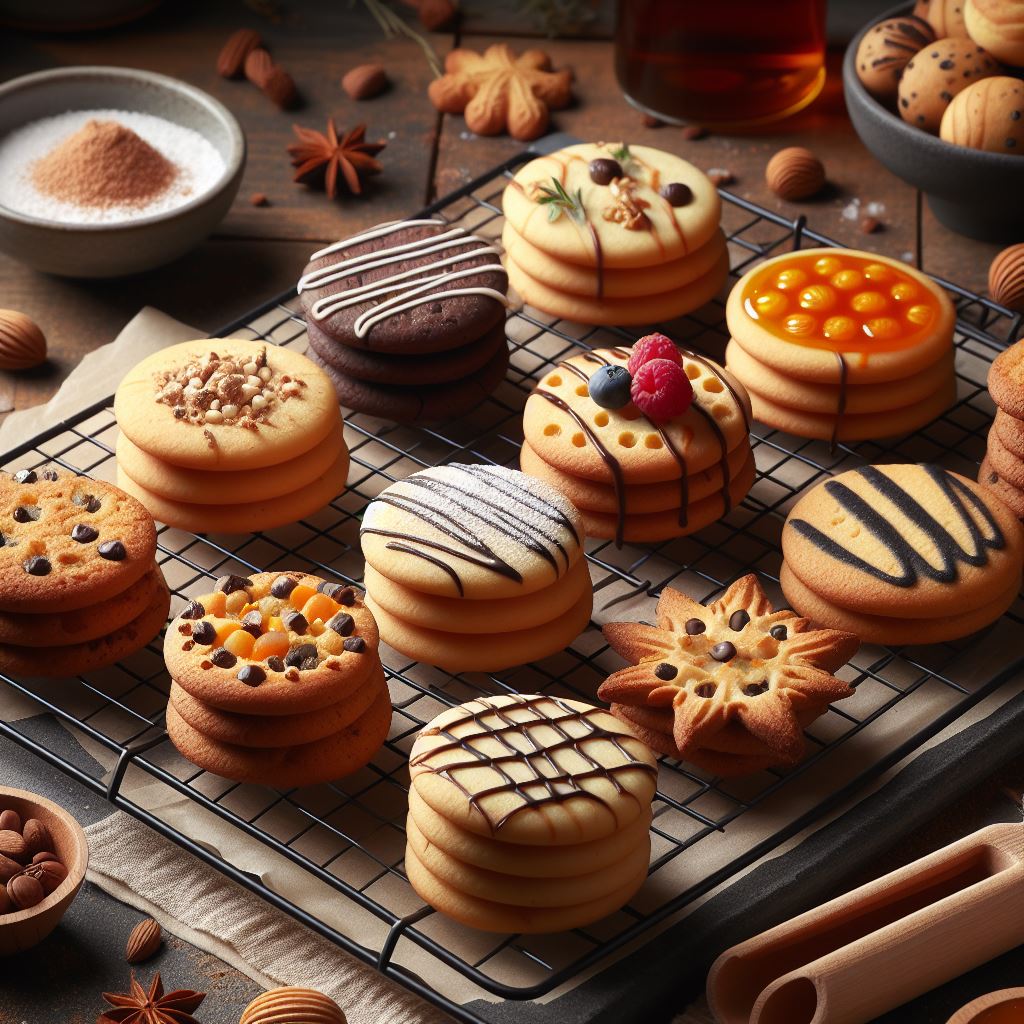The aroma of freshly baked cookies wafting through the house is a delightful reward for any baker. But achieving consistent and perfect cookies can seem like an elusive goal. Fear not, aspiring bakers! This guide unveils the secrets to mastering the art of cookie baking, equipping you with essential tips and techniques to ensure delicious results every time.
Building the Foundation: Essential Baking Tools:
Before embarking on your baking journey, ensure you have the necessary tools:
- Mixing bowls: Different sizes will be needed for dry and wet ingredients.
- Electric mixer: While not essential, an electric mixer simplifies creaming butter and sugar for a smoother dough.
- Measuring cups and spoons: Accuracy is crucial, so invest in a good set of measuring tools.
- Baking sheets: Use sturdy baking sheets with slightly raised edges to prevent spreading.
- Cooling rack: Allow your cookies to cool completely before storing or decorating.
Mastering the Mix: Essential Techniques:
- Measure accurately: Baking is a science, and precise measurement is key. Use a level measuring cup for dry ingredients and spoon and level flour for accurate volume.
- Creaming butter and sugar: This step incorporates air into the dough, resulting in a lighter and fluffier cookie. Cream together softened butter and sugar until light and fluffy.
- Dry and wet ingredients separately: Mix dry ingredients like flour, baking soda, and salt in a separate bowl. Gradually add the dry ingredients to the wet ingredients, mixing until just combined. Overmixing can lead to tough cookies.
- Chilling the dough: This step allows the flavors to develop and prevents the cookies from spreading too thin while baking. Chill the dough for at least 30 minutes before scooping and baking.
Achieving the Perfect Texture: Baking Techniques:
- Soft and chewy: Use brown sugar and corn syrup in your recipe for a chewier texture. Bake cookies until the edges are golden brown and the centers are slightly soft.
- Crispy: Use white sugar and bake cookies until golden brown all over. Let them cool completely on the baking sheet for maximum crispiness.
- Chewy edges, crispy center: Use a combination of white and brown sugar and bake cookies until the edges are golden brown and the centers are slightly soft but not gooey.
Troubleshooting Common Baking Mishaps:
- Cookies are too flat: This can be caused by overmixing the dough or using melted butter. Ensure you measure flour accurately and avoid overmixing.
- Cookies are too brown: Check your oven temperature and baking time. Lower the temperature slightly or reduce baking time if needed.
- Cookies are too cakey: This can happen if you use too much flour or bake for too long. Ensure you measure flour accurately and follow the recipe’s baking time guidelines.
Beyond the Basics: Experimentation and Personalization:
Once you’ve mastered the fundamentals, explore different flavors and textures! Here are some ideas:
- Mix-ins: Elevate your cookies with chocolate chips, chopped nuts, dried fruits, or even spices like cinnamon or ginger.
- Different flours: Experiment with almond flour, oat flour, or whole wheat flour for a unique texture and additional nutrients.
- Frosting and decorations: Take your cookies to the next level with a drizzle of frosting, sprinkles, or edible glitter.
Remember, baking is a journey of learning and experimentation. Don’t be discouraged by occasional mishaps; embrace them as learning opportunities. With practice and these essential tips as your guide, you’ll be baking perfect cookies that are not only delicious but also a testament to your baking prowess!




